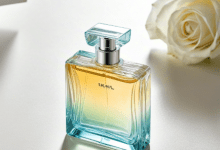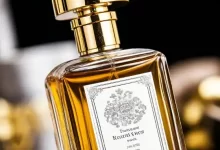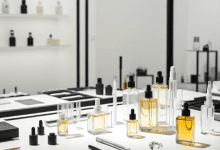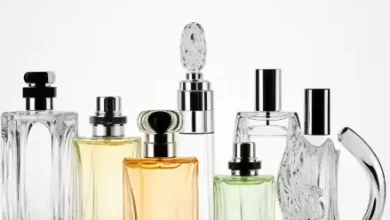Perfumer’s Workbench: Mastering Complexity in Modern Scent Creation
Navigating Regulatory Mazes, Cost Constraints, and Creative Vision at the Digital Formulation Hub
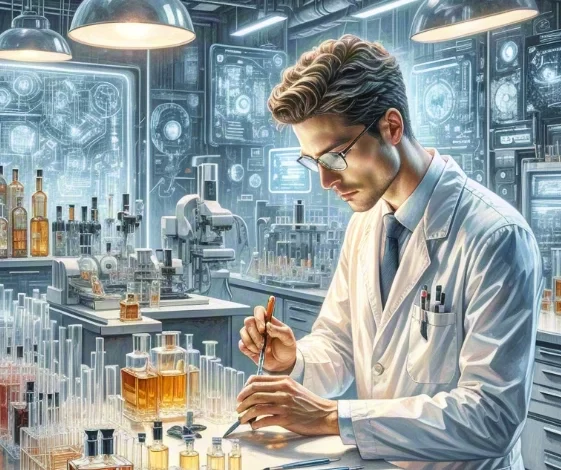
Abstract: Uncover how the Perfumer’s Workbench empowers fragrance creators to conquer unprecedented challenges. This article examines the critical role of integrated software platforms in managing intricate global regulations (IFRA, allergens), hitting precise cost targets, ensuring stability, and facilitating seamless collaboration—all while preserving the perfumer’s artistic integrity. Learn why this digital nerve center is non-negotiable for contemporary fragrance success.
Body Content:
The art of perfumery has always demanded a unique alchemy of creativity, scientific understanding, and technical precision. However, the landscape facing today’s perfumer is exponentially more complex than that of even a decade ago. Burgeoning global safety regulations, heightened consumer awareness (especially regarding allergens), razor-thin cost margins, demanding performance expectations, and the relentless pace of innovation create a pressure cooker environment. Navigating this intricate web requires more than a keen nose and a well-stocked organ; it demands a sophisticated digital command center: the modern Perfumer’s Workbench. This integrated software platform has evolved from a helpful tool into the indispensable backbone of fragrance development, enabling perfumers to transform visionary concepts into compliant, cost-effective, and captivating realities.
The Mounting Challenges: Why the Workbench is Essential
Understanding the criticality of the Perfumer’s Workbench requires acknowledging the multifaceted pressures it alleviates:
- The Regulatory Labyrinth: The IFRA Standards, constantly evolving based on rigorous safety assessments, dictate strict usage limits for hundreds of fragrance materials across diverse product categories (fine fragrance, skincare, hair care, detergents). Simultaneously, regulations like the EU Cosmetic Regulation mandate labeling for 26 specific allergens above certain thresholds. Keeping track manually is impossible; a single formula can contain 50-150 ingredients, each with potential restrictions or labeling requirements that vary by market and application. Non-compliance risks product recalls, fines, reputational damage, and, crucially, consumer safety issues.
- Precision Cost Engineering: Fragrance is often a key cost driver in FMCG and luxury goods. Brands operate with strict cost targets (cost-per-kilo). Raw material prices fluctuate constantly. Perfumers must create compelling scents that perform exceptionally while adhering to these financial constraints. Manual cost calculation for complex formulas is slow and error-prone.
- Performance & Stability Demands: Consumers expect longevity and consistent scent character. Formulations must remain stable – no discoloration, separation, or odor degradation – over the product’s shelf life under various conditions (heat, light, different bases like lotion or soap). Predicting stability traditionally requires lengthy physical testing.
- Accelerated Time-to-Market: The pace of product launches is relentless. Development cycles are compressed. Perfumers need tools to iterate faster, make informed decisions quickly, and reduce costly late-stage failures.
- Global Collaboration & Knowledge Management: Fragrance development is rarely solitary. Teams span perfumers, evaluators, application chemists, marketing, regulatory affairs, and clients, often across different geographies. Managing versions, feedback, and institutional knowledge efficiently is paramount.
The Perfumer’s Workbench: A Multi-Faceted Solution Engine
Modern Perfumer’s Workbench software directly addresses these challenges through a suite of interconnected, intelligent functionalities:
1. Conquering Compliance: The Automated Guardian
* Real-Time IFRA & Regulatory Engine: This is the cornerstone. The software integrates the latest IFRA Standards Library and relevant regional regulations (e.g., EU allergens, California Proposition 65). As the perfumer builds or modifies a formula:
* Instant Flagging: Restricted or prohibited materials for the target application category are highlighted immediately upon entry.
* Dynamic Limit Monitoring: The software continuously calculates the concentration of every restricted material against its specific, often complex, IFRA limit (which can be based on QRA, specific restrictions for certain categories, or prohibited status). Warnings appear instantly if a limit is approached or exceeded.
* Automated Allergen Calculation & Labeling: The platform calculates the exact concentration of all 26 EU allergens (and others as required) present in the formula. It determines if they exceed labeling thresholds and automatically generates the precise, compliant ingredient list (INCI) for packaging.
* Category-Specific Compliance: Ensures formulas meet the distinct requirements for fine fragrance, leave-on, rinse-off, oral care, or household products.
* Safety Data Sheet (SDS) Integration: Provides quick access to critical safety and handling information for each raw material.
* Audit Trail & Certificates: Generates detailed compliance reports and draft Certificates of Conformity, providing auditable proof of adherence for clients and regulatory bodies. This significantly reduces the burden on regulatory affairs teams.
2. Mastering Cost: Precision Financial Formulation
* Integrated Raw Material Costing Database: Links directly to live or regularly updated supplier pricing data.
* Instant Cost-Per-Kilo Calculation: With every formula modification, the software instantly recalculates the total cost-per-kilo based on current material prices and concentrations. No more manual spreadsheets or delayed quotes.
* Cost-Driven Exploration: Perfumers can easily evaluate the cost impact of swapping materials (e.g., replacing a costly natural with a more affordable synthetic alternative that provides a similar olfactory effect) in real-time. Project managers can set cost targets within the system, and perfumers receive immediate feedback on whether their iterations meet the target.
* Batch Costing & Scale-Up: Accurately calculates costs for pilot batches and full-scale production runs.
3. Predicting Performance & Stability: Data-Driven Insights
* Stability Risk Flagging (Advanced Feature): Leveraging databases of known chemical interactions and historical stability data, sophisticated workbenches can predict potential incompatibilities or instability risks (e.g., ester hydrolysis leading to odor shift, aldehyde polymerization causing discoloration, Schiff base formation). This allows perfumers to proactively reformulate problematic combinations before committing to lengthy physical stability tests.
* Performance Parameter Tracking: While subjective, some platforms allow perfumers to log evaluation notes on perceived longevity, sillage, and odor profile evolution over time, linked to specific formula versions, creating a valuable internal performance database for future reference.
* Integration with Analytical Data: Increasingly, workbenches can interface with analytical results (like GC-MS traces), allowing perfumers to correlate sensory evaluations with chemical composition.
4. Streamlining Workflow & Collaboration: The Digital Hub
* Centralized Project Management: Provides a single platform for storing briefs, formulas, evaluation notes, stability test results, compliance documents, and costings – all linked to a specific fragrance project.
* Robust Version Control & History: Tracks every single change made to a formula, who made it, when, and why (if notes are added). Enables effortless comparison between versions and reversion to previous states. Eliminates confusion over “the latest version.”
* Seamless Collaboration Tools: Enables secure sharing of formulas, mods, and project data with internal teams (evaluators, application labs, regulatory, management) and external clients (with controlled access). Commenting, annotation, and approval workflows streamline feedback loops across geographies and time zones.
* Digital Sample Request & Tracking: Manages the logistics of physical sample creation, labeling, and distribution from the lab, linking samples directly to their precise formula version.
* Knowledge Capture & Reuse: Creates searchable libraries of successful accords, base formulas, and regulatory solutions, transforming individual perfumer knowledge into valuable, reusable corporate assets. Accelerates the onboarding of new perfumers.
5. Liberating Creativity: Empowering the Perfumer
Crucially, the Perfumer’s Workbench is not a creativity inhibitor; it’s an enabler:
* Reducing Cognitive Load: By automating tedious calculations, complex regulatory checks, and data retrieval, the software frees the perfumer’s mind to focus intensely on the sensory aspects: smelling, evaluating nuances, imagining new accords, and refining the olfactive vision.
* Enabling Confident Experimentation: Knowing that compliance boundaries and cost impacts are monitored in real-time provides a safety net. Perfumers feel empowered to explore novel materials or unconventional combinations without the constant fear of inadvertently creating a non-compliant or prohibitively expensive formula.
* Facilitating Micro-Adjustments: The precision of digital formulation allows perfumers to make incredibly fine adjustments (tenths or hundredths of a percent) and instantly see the consequences on cost and compliance, enabling a level of refinement previously difficult to achieve efficiently.
* Expanding Olfactory Horizons: Integrated raw material databases with detailed odor descriptions and performance characteristics can inspire perfumers to explore ingredients outside their usual palette or rediscover forgotten materials.
The Tangible Benefits: Efficiency, Accuracy, and Competitive Edge
Implementing a robust Perfumer’s Workbench platform delivers measurable returns:
- Significantly Reduced Development Time: Automating calculations and compliance checks can cut development cycles by 20-40%.
- Dramatically Lowered Compliance Risk: Near-elimination of costly regulatory failures and recalls.
- Improved Cost Accuracy & Control: Real-time costing prevents budget overruns and enables proactive cost optimization.
- Enhanced First-Time Success Rate: Predictive stability insights and better-informed formulation reduce late-stage failures.
- Faster Time-to-Market: Streamlined workflows and collaboration accelerate the path from brief to launch.
- Stronger Knowledge Management & IP Protection: Centralized, secure storage of formulas and accords.
- Empowered, More Productive Perfumers: Freeing creative talent from administrative burdens.
- Competitive Advantage: The ability to develop high-quality, compliant, cost-effective fragrances faster is a key differentiator.
The Future-Proofed Workbench: Continuous Evolution
Perfumer’s Workbench technology is not static. Key areas of ongoing advancement include:
- Enhanced AI/ML Integration: For predictive olfactive profiling (suggesting accords based on briefs), more accurate stability forecasting, and intelligent material substitution recommendations.
- Deeper Regulatory Intelligence: Automated updates for global regulations and proactive alerts on upcoming regulatory changes affecting existing formulas.
- Sustainability Modules: Tools to track and optimize the environmental footprint of formulations (carbon footprint, biodegradability, renewable carbon index) alongside cost and compliance.
- Blockchain for Traceability: Providing immutable records of formula provenance, raw material sourcing, and compliance certifications.
- Advanced Sensory Data Analytics: Correlating consumer perception data with formula chemistry and perfumer evaluations.

